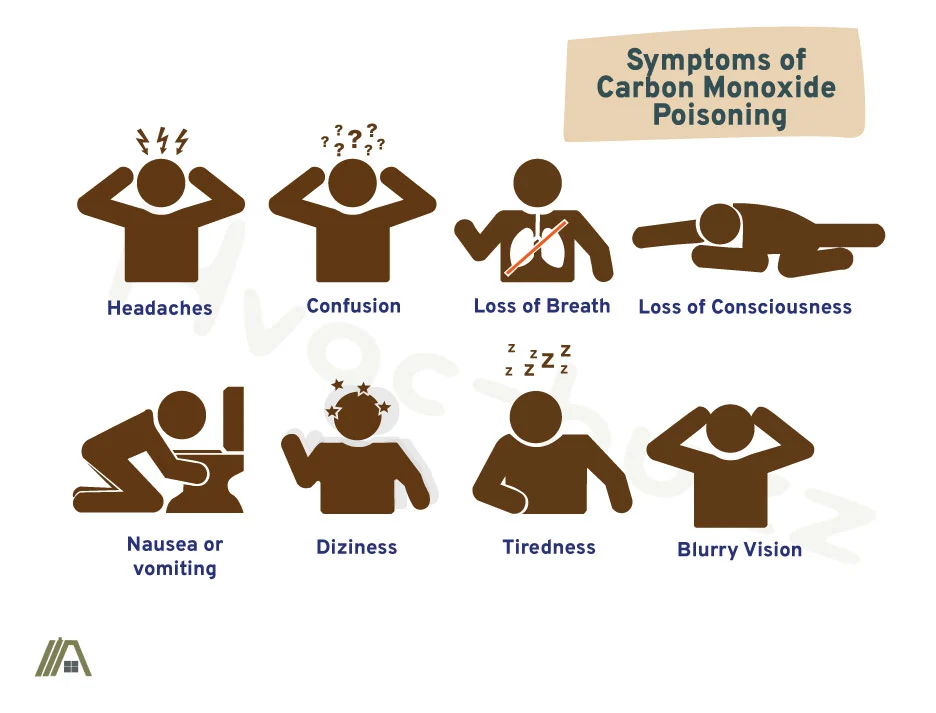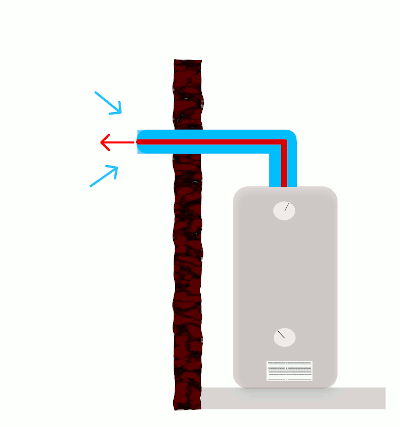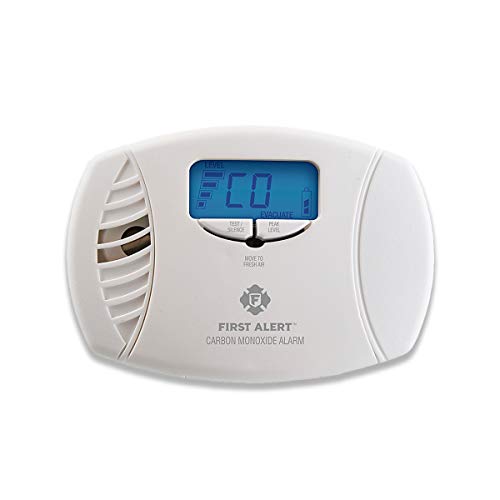Sometimes when garages or attics are converted into bedrooms there might be a situation where a water heater is in the same room.
In most cases, this will not pose any problems, but some precautions must be taken to ensure safety.

It is perfectly safe to sleep in a room with an electric water heater. Gas water heaters should not be placed in a bedroom unless they are direct vent type or separated by a weather-stripped self-close door. The combustion air must always be drawn from the exterior.
Carbon Monoxide Poisoning From Gas Water Heater
Carbon monoxide (CO) is an odorless, colorless, and tasteless gas that is less dense than air.
Every year hundreds of Americans die of CO poisoning not related to fires. Tens of thousands visit the hospital and thousands are hospitalized.

CO can be found whenever fuel is burned. When using a non-direct vent gas water heater there is a risk of backdrafting and the carbon monoxide can leak back into the living space.
Direct Vent Water Heaters

Direct vent water heaters do not use a chimney as conventional water heaters do.
Instead, they are placed next to an exterior wall and the flue gases are expelled directly out of the wall via a coaxial vent pipe.
Coaxial means that the same vent pipe will exhaust the flue gases and bring in combustion air from the outdoors.
This is why it is safe to use a direct vent type water heater in a bedroom.
Direct vent type water heaters do not pose any risk for CO poisoning. Since they will vent the flue gases directly out of an exterior wall and pull oxygen from the exterior via the same coaxial vent.
Standard Atmospheric Vent Water Heaters
Atmospheric water heaters, also called conventional gas water heaters use a flue to exhaust the burning gases to the chimney or directly out of the home.
They draw combustion air from inside the room. This can lead to backdrafting and carbon monoxide poisoning.
In case you are thinking of replacing your existing water heater with a new one, you might be interested in learning whether they can or can’t be transported laying down.
When Could Water Heaters Backdraft?
There are three situations when atmospheric water heaters can leak carbon monoxide to the living area.
Orphaned Water Heater/ Over-sized Chimney
A problem can arise when a furnace is removed from the same chimney the water heater is connected to. This is called an orphaned water heater.
When a furnace is removed the water heater will not heat up the chimney enough to create sufficient draft. This is because the chimney was designed for a large furnace.
The problem is worsened when the water heater is new since it is likely very energy efficient and will not warm up the oversized chimney.
This means that the draft is insufficient and the exhaust gases from the water heater could be drawn back into the house.
This problem can be solved by installing a stainless steel chimney liner that will reduce the size of the flue.
- Mill Certified 316 Stainless Steel
- Made in the USA
- Brand name: Forever Vent
- Country of Origin: United States
Last update on 2024-03-27 / Affiliate links / Images from Amazon Product Advertising API
Airtight House
Since atmospheric water heater will draw the combustion air from inside the room there must be adequate air supply from the outside.
Problems can arise when old buildings are renovated and are made significantly more airtight.
Inadequate supply air duct size or completely lacking supply air duct will make the house be under vacuum whenever any exhaust fan is used.
If all the windows are closed and there is no air supply duct the only source of external air is going to be the chimney or the flue of the water heater.
The problem is especially bad when using range hoods since they are very high capacity. The range hood will pull air from the easiest path and in a very airtight house, it can easily pull air through the chimney.
If the water heater is running carbon monoxide is pulled directly into the house. Since it is odorless and colorless, it is a very dangerous situation!
This is why it is always important to install a carbon monoxide sensor whenever you have a fuel-burning appliance.
- Keep your family safe with this digital display, plug in carbon monoxide alarm; It works with any standard outlet and also has a battery backup for continuous monitoring of Carbon Monoxide levels,...
- Features an advanced electrochemical carbon monoxide sensor; Peak level feature displays the highest concentration of carbon monoxide measured
- A loud 85 decibel alarm sounds when Carbon Monoxide levels reach dangerous levels
- To ensure complete protection make sure to place one on each level of your home and in each bedroom
Last update on 2024-03-27 / Affiliate links / Images from Amazon Product Advertising API
I particularly like this model since it has a digital readout and a peak-level memory. However, keep in mind it will not display the reading continually. The reading is updated/displayed only when the button is pressed.
It is important to have the gas water heater installation checked by a professional. Especially if you don’t know who and when the job was carried out.
Carbon Monoxide Detector
Whenever there is a fuel-burning appliance in the house a carbon monoxide detector should be installed.
This includes a water heater. The CO sensor will detect the amount of CO in the air and it will sound an alarm when a certain treshold is exceeded.
In most places it is not required by law (except rental properties) but it is a cheap life insurance and should be installed in all homes with any type of fuel-burning appliance.
Don’t confuse this with a smoke detector. A smoke detector will not detect carbon monoxide and is only useful to prevent fires.
Where to place the Carbon Monoxide Detector
Ideally, there should be a carbon monoxide detector in every single room in the house.
Unlike a smoke detector, a carbon monoxide detector should be placed on a wall about 5 feet from the ground.
There needs to be at least one detector per floor.
If you can afford only one CO detector, install it in the bedroom and make sure that the alarm is loud enough to wake you.
However, the prices have dropped significantly over the last few years and they are quite affordable now. Especially if you buy a value pack (amazon link).
They last for 10 years so it is a wise investment to buy a couple for your home to protect your loved ones.
Building Codes for Placing a Water Heater in a Bedroom
In most areas, there is no code violation when a water heater is placed in a bedroom.
However, some guidelines should be followed.
If it is an electric water heater it can be placed wherever since there is no risk of carbon monoxide poisoning. Just common plumbing code should be followed, but that does not change if it is placed in a bedroom or not.
If it is a gas water heater there are a couple of conditions that have to be met in order for it to be up to code.
The water heater must be direct-vent type OR enclosed in a closet with a weather-stripped door and the combustion air must be drawn from the outside. Never from the living space.
Related article: Can a Gas Water Heater Be Installed in a Bathroom



